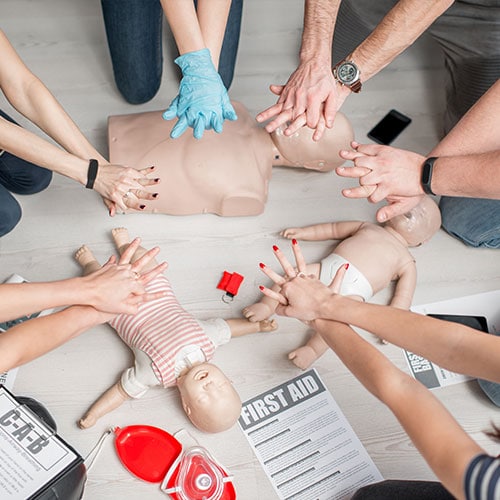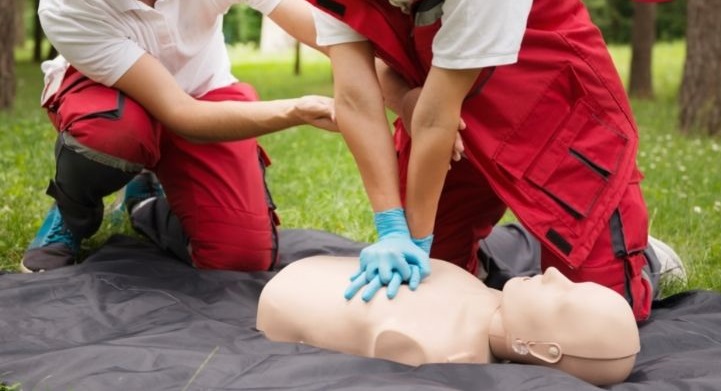Introduction
Cardiopulmonary resuscitation (MOUTH-TO-MOUTH RESUSCITATION) is a lifesaving technique that everyone should recognize. Nevertheless, despite its critical importance, various false impressions border CPR practices and qualification. Many individuals may wait to get accredited due to these misconceptions, which can inevitably cost lives in emergency situation situations. This article aims to expose prevalent myths regarding CPR while emphasizing the importance of obtaining certified via accredited first aid courses By understanding the truths, you can empower on your own and potentially save a life.
Common False impressions Concerning mouth-to-mouth resuscitation and Why You Must Obtain Certified
What Is mouth-to-mouth resuscitation? Recognizing the Basics
CPR means cardiopulmonary resuscitation, a treatment designed to recover breathing and circulation in a person that has quit taking a breath or whose heart has actually ceased beating. The method includes chest compressions incorporated with synthetic air flow strategies such as mouth-to-mouth breathing or making use of a bag-mask device.
- Key Parts of mouth-to-mouth resuscitation: Chest Compressions: These aid preserve blood circulation to crucial organs. Rescue Breaths: These supply oxygen to the lungs. Automated External Defibrillator (AED): A tool that can surprise the heart back into rhythm in situation of specific heart arrests.
Misconception 1: Only Physician Can Do CPR
One common myth is that only trained medical professionals can perform mouth-to-mouth resuscitation effectively. While doctor are certainly knowledgeable at it, anybody can find out just how to do CPR via CPR courses
- The Reality: Laypersons can be educated to provide efficient CPR. Basic methods are straightforward and can be understood by any individual willing to learn. Bystanders commonly play critical functions in conserving lives prior to professional help arrives.
Misconception 2: mouth-to-mouth resuscitation Is Only Valuable for Cardiac Arrest Victims
Another extensive misunderstanding is that mouth-to-mouth resuscitation is entirely for individuals experiencing cardiac arrest. In truth, mouth-to-mouth resuscitation can be beneficial in different emergencies.

- Other Circumstances Where CPR Is Useful: Drowning incidents Drug overdoses Choking targets where the air passage has actually been compromised
Misconception 3: You Ought To Avoid Giving Rescue Breaths
Many individuals believe rescue breaths are unnecessary or perhaps harmful as a result of the danger of infection or other issues. This originates from confusion concerning how COVID-19 may affect these practices.
- The Facts: Rescue breaths are essential for giving oxygen. During instances like drowning or opioid overdose, rescue breaths end up being crucial. Hands-only mouth-to-mouth resuscitation is recommended when someone is untrained or reluctant but understanding both strategies continues to be vital.
Misconception 4: You Can't Damage Somebody by Executing Mouth-to-mouth Resuscitation Incorrectly
While it holds true that performing CPR improperly might create some injury, not trying it whatsoever may lead to fatality.
- Understanding the Threats: Rib fractures might happen during hostile upper body compressions. Any activity taken is much better than doing nothing; contemporary guidelines stress that "something" is much better than "absolutely nothing" throughout cardiac arrest situations.
Misconception 5: When You're Educated, You Don't Need More Training
Some people believe that as soon as they have actually finished a course, they don't need additional training or recertification.

- Why Ongoing Training Matters: Techniques advance gradually based upon brand-new research. Regular refresher courses keep your abilities sharp and ensure you're current with current best practices.
Misconception 6: Children Do Not Need CPR Training
Parents commonly presume they First Aid Course Hobart will not require to execute mouth-to-mouth resuscitation on their children due to the fact that kids do not experience heart occasions as often as adults do.
- The Truth for Moms and dads: Children can struggle with respiratory problems, choking events, or drowning situations calling for instant attention. Learning pediatric-specific techniques makes sure readiness throughout emergency situations involving children.
Importance of Getting Certified in First Aid and Mouth-to-mouth Resuscitation Courses
Why Accreditation Issues in Emergency Situations
Being licensed in first aid and CPR supplies several advantages past just discovering life-saving skills:
- Enhances confidence when dealing with emergencies Increases understanding of safety and security protocols Encourages even more individuals to step forward in emergency situations
Benefits of Taking a First Aid Course
Comprehensive Capability: Individuals learn not nearly mouth-to-mouth resuscitation but additionally basic first aid concepts such as injury treatment and handling fractures. Legal Defense: Qualification typically features Good Samaritan legislations security when helping somebody during an emergency. Career Opportunities: Many tasks call for emergency treatment qualification as component of their safety and security protocols; being licensed enhances employability in fields like teaching, mentoring, health care, and childcare.FAQs About Typical Misconceptions Pertaining To CPR
FAQ 1: What type of training do I require for effective CPR?
You needs to sign up in recognized CPR courses that cover both adult and youngster resuscitation methods effectively.

FAQ 2: How usually must I restore my first aid certificate?
It's advisable to renew your first help certificate every two years given that guidelines transform regularly based upon emerging research.
FAQ 3: Is hands-only compression better than conventional CPR?
For inexperienced onlookers or those unpleasant providing rescue breaths, hands-only compression works yet knowing both techniques gives a higher possibility of survival if trained properly.
FAQ 4: What sources are readily available for learning about first aid?
Numerous companies supply on the internet resources together with physical programs; reliable platforms consist of the American Heart Association and Red Cross sites which information first aid courses available near you.
FAQ 5: Are there any age restrictions on taking an emergency treatment course?
Most first aid courses welcome participants of every ages; however, some specialized classes may be tailored towards particular age groups (e.g., kids vs adults).
FAQ 6: Does my workplace require me to get certified?
Certain workplaces-- especially those involving public communication-- typically require employees to have valid certifications in emergency treatment and fundamental life support (BLS).
Conclusion
Understanding the truth behind typical misunderstandings regarding mouth-to-mouth resuscitation is vital for raising understanding concerning this life-saving strategy. Whether you're a parent wishing to shield your child or a staff member looking for accreditation for specialist innovation, obtaining certified via correct first help courses arms you with the knowledge essential for acting decisively throughout emergency situations. Keep in mind-- anybody can find out exactly how to execute efficient mouth-to-mouth resuscitation regardless of history; don't let misconceptions deter you from becoming encouraged! So why wait? Register today for a CPR course!
This extensive overview seeks not only to resolve misconceptions surrounding CPCR but additionally serves as an encouragement for everyone to seek certification so they as well can add positively throughout emergencies!